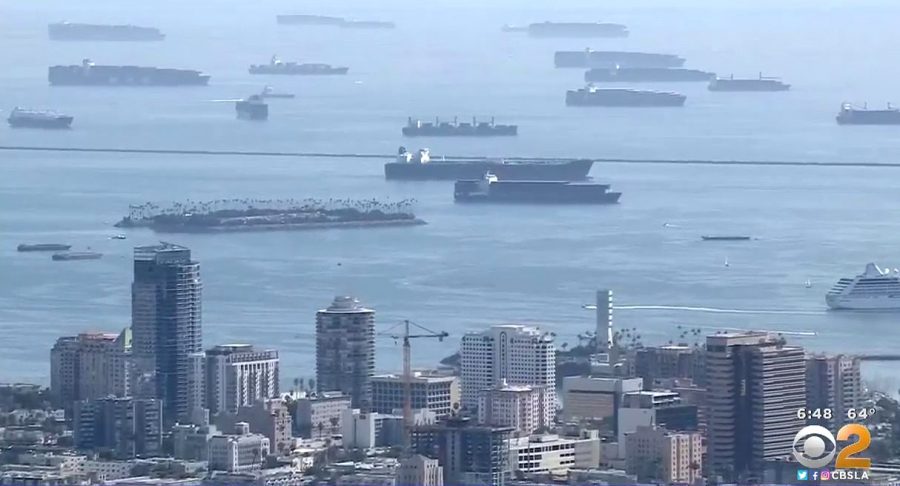The Supply Chain Crisis Explained
For several months now, as many may know, things have been taking longer to arrive, many store shelves have been left bare, and prices for many goods have gone up. This is all do to the current supply chain crisis that the United States has been dealing with.
The central issue that the whole crisis has been stemming from is that cargo ships coming from Asia have been getting held up off of the west coast, as they have been unable to unload what they are carrying. This is due to ports along the west coast, in California particularly, being filled up with shipping containers already, and are unable to move the cargo efficiently. This clog of cargo is caused in part by a lack of crane operators and truck drivers to move and ship the goods.
The trucking industry has been on the decline over the past several years, the shortage has gone up from 61,000 to 80,000 in just three years. Retirements and a lack of younger drivers has contributed to this heavily. Bob Costello, the chief economist of the ATA (American Trucking Association), estimates that the industry will need to hire 1 million divers over the next nine years to replace retiring drivers.
Other factors like age restrictions, time away from home, and the ongoing pandemic have also impacted the industry’s numbers.
Luckily for the ATA, their fears of President Biden placing in a vaccine/testing mandate for private businesses and industries with more than 100 employees has been subsided, as the senate has recently voted to strike down the mandate.
The ATA had previously estimated that the mandate could lead to up to 37% of the industry’s drivers quitting their jobs, rather than getting the vaccine or getting tested weekly.
As far as the current issue at the ports is concerned, to truly understand what the issue is, one has to look at how the process has been disrupted.
Under normal circumstances, ships carry containers to the port, and containers are then checked and unloaded. The goods are then unloaded onto trucks. Empty containers are then placed back onto ships to free up port space, while the trucks take the goods to distribution centers across the United States.
Under current circumstances, this is how the process is playing out for many ships:
Ships carry the containers to the port, where there are not enough port staff to unload the ships and not enough drivers to operate the trucks, and both empty and full containers stack up in the port. Ships are then diverted to other ports, which causes congestion in the port harbors as too many ships arrive.
The demand for goods has also been on an incline over recent months (22% increase) specifically among the American people, while other nations in Europe and Asia have seen similar demand as before. The most popular items under demand include toys, sporting goods, and household items. This increased demand has only contributed to the clog at various ports.
Unfortunately for millions of consumers, the experts in the shipping industry don’t expect the backlog to end any time soon.











